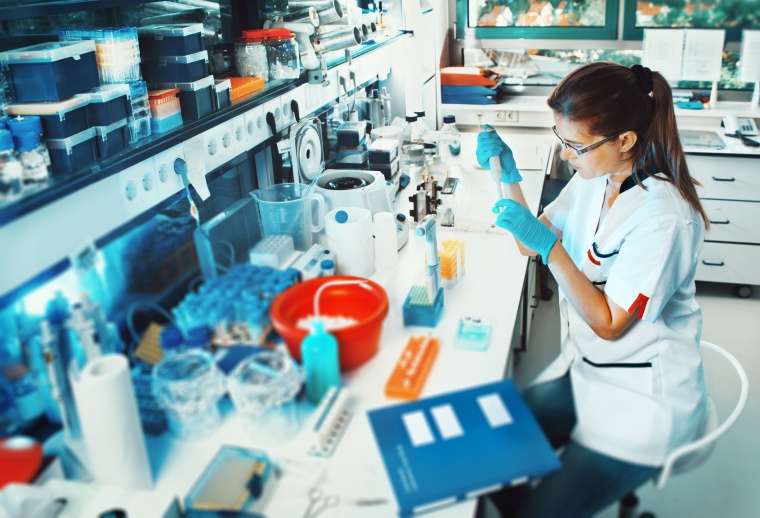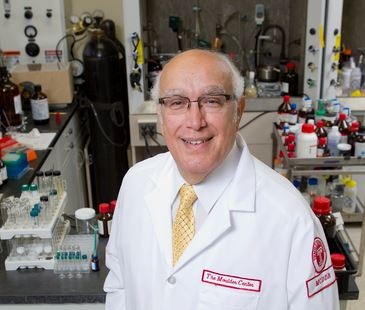Bridging the Innovation Gap




During the last two decades the pharmaceutical industry was forced to undertake significant structural changes to address mounting challenges from strict regulatory policies, lower productivity, patent expiration of major products, innovation gap and fierce price competition from generics. Mergers and acquisitions, layoffs, and outsourcing of research became common place in an industry that had previously been nearly immune to these activities. During the 2000-2010 time period, over 1,345 merger and acquisition (M&A) deals valued at over $690 billion were consummated globally.
Over 300,000 pharmaceutical jobs were eliminated as a result of these activities, and this substantial decrease in internal resources forced the pharmaceutical industry to explore several strategies for improving efficiency and effectiveness of R&D. Many companies began to increase their emphasis on “externally driven” R&D activities. Nowadays, pharmaceutical companies are changing their business model and abandoning their staunchly held position that all R&D efforts should be done internally.
Contract Research
Contact Research Organizations (CROs) and contract manufacturing organizations (CMOs) have become an integral part of the pharmaceutical industry and flourished. They provide quality API and drug candidates addressing and improving pharma productivity. But at the same time a new player entered the drug discovery and development landscape: the academic drug discovery center. The pharmaceutical industry has recognized the potential of the combination of cutting-edge academic research and entrepreneurially minded academic scientists (especially those with previous industrial careers) and has expanded its effort to engage academic drug discovery centers. In some cases, these interactions are in the form of traditional sponsored research programs, but other forms of collaborations have been established.
Pipeline Enrichment
To ensure good return on investment (ROI) and minimize generic competition, pharmaceutical R&D strategies aimed at focusing resources to discover more biologic drug candidates. Big Pharma have expanded their biopharmaceutical efforts and a significant number of new drugs approved in the last 5 years have been therapeutic proteins and antibodies. Many of these biotherapeutics represent “personalized medicine” approaches and hold promise for specifically targeting diseases which will be particularly susceptible.
Personalized Medicine
Since the essential completion of the Human Genome Project in the mid-2000s, the pursuit of personalized medicine has grown. The role that a patient’s genetic makeup plays in the efficacy (pharmacogenomics) and safety (pharmacogenetics) experienced by that particular patient has become a focus of pharmaceutical companies and regulatory agencies alike. Giving the rise in cost of health care, personalized medicine will revolutionize health care, it will lead to effective diagnostic tools which will give early prediction for diseases and lead effective preventive and therapeutic intervention.
Commitment To Innovation
Despite all of today’s challenges, pharmaceutical companies continue with their commitment to innovation and embark on a range of initiatives and projects to address unmet medical needs or identify superior innovative drugs in place of ones with weaknesses, risks or less than desirable efficacy. Some initiatives such as multidimensional optimization and translational research are helping to increase the success rate both at the preclinical and clinical stages.
Skilled researchers in Pharma and academic institutions are engaged in multidimensional lead optimization by embarking on simultaneous optimization of both activity and properties exploring SAR (structure-activity relationship) and SPR (structure-properties relationship). Both are guided by set of in-vitro assays and utilize several sophisticated enabling technologies which include antibody display technology, high-throughput screening (HTS) technology, drug design technology, pharmacokinetic (PK) technology, and information technology (IT).
Computational Tools
Modern industrial research facilities depend on IT tools to drive productivity, maintain records, interpret data, and to facilitate the coordination of functional teams and work groups. Drug discovery scientists are supported by a wide range of innovative IT systems. Computational tools are now an integral part of drug discovery. The success of any drug discovery project depends to a large extent on the quality of leads that are taken forward into the discovery phase. As a result, in the early stages of a project the goal is to cast as wide of a net as possible or use as “wide of a funnel” as possible to try to identify novel leads for target. Any technology that can aid in this process can have a significant impact on the project.
The Cheminformatics platform, for example, provides a database of chemical structures and associated biological data that can be searched, sorted, and analyzed to facilitate the discovery of potential new drug candidates. Analysis of thousands, if not millions, of data points provided by biological screening using high throughput systems is made possible through the seamless integration provided by the Cheminformatics IT system.
Medicinal chemists’ discovery output could benefit from a recently launched cheminformatics algorithm, ChemPlanner. Based on what it has learned about organic chemistry from literature the web-based tool predicts the shortest, fastest, cheapest route to the target, even through predicted but never-before-reported reactions. ChemPlanner, aimed at boosting creativity and productivity of chemists by reducing literature researching, cuts down on planning time so that chemists can synthesize more molecules and complete more projects in less time.
Other enabling tools such as Molecular Modeling and Simulation software provide an excellent platform for visualizing, in silico docking and understanding protein structure and function. This IT platform allows researchers to perform industry standard molecular simulations to facilitate their research.
Industry standard programs for the analysis of pharmacokinetics, pharmacodynamics, and clinical trial data are also available, providing with access the tools necessary to understand how potential new therapeutics behave in an in-vivo setting.
Concluding Remarks
Despite the tremendous challenges the pharmaceutical industry are facing they are continuing with their commitment to innovation and the discovery of innovative drugs to address unmet medical needs for treatment of various diseases. Indeed medicinal chemists are facing a challenge of their own. Trying to survive in a changing environment where Pharma are focusing on biologics drug candidates, this will require chemists to adapt to a new environment and develop approaches to join in these efforts of linking biologics to small molecules through identifying innovative linker technologies for antibody drug conjugates (ADC) and developing bioavailable peptides therapeutics for many diseases.
Pharma will continue partnering with CROs and CMOs to provide quality APIs and drug candidates and improve pharma efficiencies and productivity as well as partnering with academic institutions to have access to innovative early stage drug candidates to address the innovation gap. Many academic drug discovery centers are well-suited for doing the early work around target discovery and target validation and basic research. Pharma-Academia partnerships are expected to continue to grow during the next decade.
Moulder Center for Drug Discovery Research:
The Moulder Center, a modern drug discovery facility within Temple University’s School of Pharmacy, was commissioned with this very goal in mind. As a multidisciplinary research hub and integrated drug discovery facility embedded within Temple University, the Moulder Center has access to the latest in cutting-edge enabling technologies. The Center’s team members, many of which are former Pharma scientists, strive to further the development of scientific discoveries, enabling important research to move beyond the lab and into the broader research community. New biological targets can be rapidly screened for small-molecule modulators, using state-of-the-art screening technology and computational chemistry. The medicinal chemistry laboratories are designed to handle mg-to-kg-scale small-molecule synthesis, taking advantage of parallel synthesis platforms to enhance productivity. In-vitro physicochemical and ADME screening as well as dedicated in-vivo pharmacokinetic resources enhance the chances for success by insuring that biologically interesting molecules also possess good drug-like properties.
The mission and objectives of the Moulder Center are:
- Discover new drug candidates using modern drug discovery approaches employing cutting edge science in all phases of drug discovery.
- Facilitating collaborative research within Temple University and across other universities, research institutions, pharmaceutical companies and external collaborators in the US and abroad.
- Bridging the gap between pre-clinical and clinical research in support of translational medicine (biomarkers, imaging ligands, etc.)
- Training students, postdoctoral fellows, faculty, visiting scholars and future researchers by providing them with a good understanding of modern drug and hands-on training on various aspects of drug discovery.
The Center has secured funding through a series of collaborations, grants, and contract research and collaborative programs with premier institutions, as well as regional and international corporate partners and generous gifts from distinguished alumni. Current research activities include projects in addiction and withdrawal, Alzheimer’s disease, cardiovascular disease, cancer therapeutics, and anti-viral agents.






